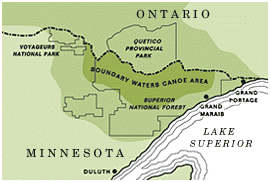Crews are battling three wildfires that ignited the week of May 11 in St. Louis County, Minnesota. The fires, which are burning in a mixed forest, were reported on Sunday and Monday. Ground and air support, along with suppression efforts, will continue in the Superior National Forest (SNF) until further notice. As of May 13, the USFS has closed part of the Laurentian Divide Ranger District to recreational use. We will continue to share updates.
Camp House Fire
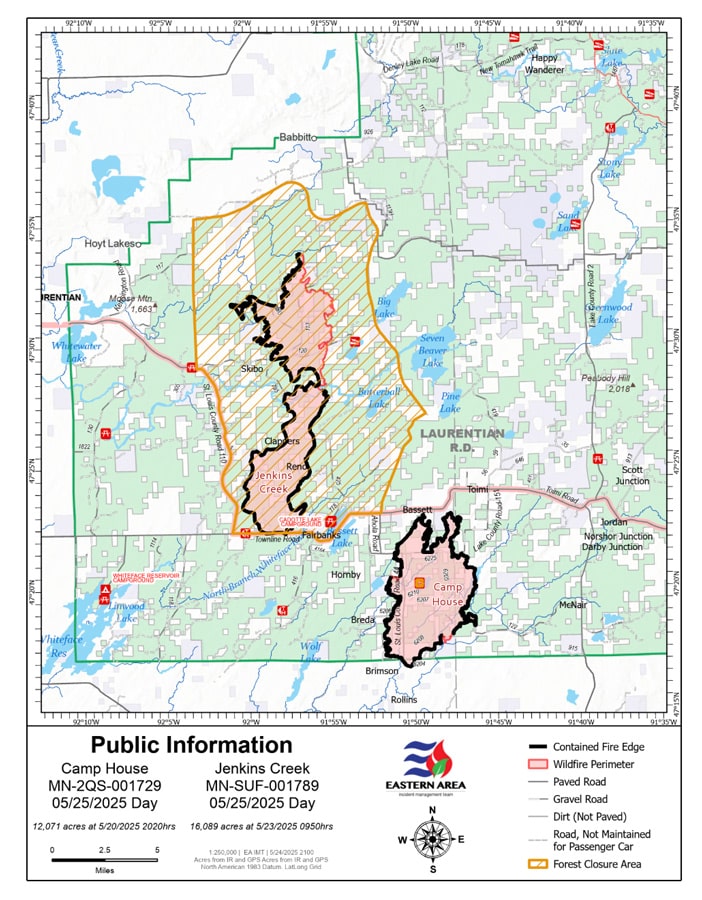
June 14 Update:
Size: 12,071 acres
Status: 100% Contained
From Minnesota Incident Command System – MNICS:
“The Camp House Fire remains 90% contained with no new growth. Resources recently reassigned to a dedicated Initial Attack (IA) group are prepared to respond to any new fires, especially with the expected increase in tourist visitation over the holiday weekend. Although much of the fire is under control, areas with lingering heat still pose risks. Containment is a positive sign, but it does not mean the fire is completely out. A fire is fully extinguished only when all heat and smoke are eliminated. Crews continue to patrol the fire line, locating and extinguishing the remaining hot spots. In areas where the fire is contained, crews are now focusing on suppression repair on contingency lines, restoring disturbed areas from suppression activities, implementing erosion control measures, removing hazards, protecting natural resources, and repairing fire lines to return them to their natural condition.”
The Camp House Fire started Sunday, May 11 near Camp House Road, 2 miles northeast of Brimson, one hour north of Duluth, on the southern edge of the Superior National Forest.
While priority is on firefighter safety, they will also take action to secure buildings and structures. “Air resources, heavy equipment, and ground resources will continue to suppress the fire. If drones are detected near the fire, all air operations supporting the fire will stop,” the MICS said.
Authorities suspect humans caused the fire. According to an article by Northern News Now, the Minnesota Department of Natural Resources (MNDNR) is investigating a report that a group started a campfire on Sunday, then left the area. When they returned, the fire had grown out of control. The MNDNR said they may face charges.
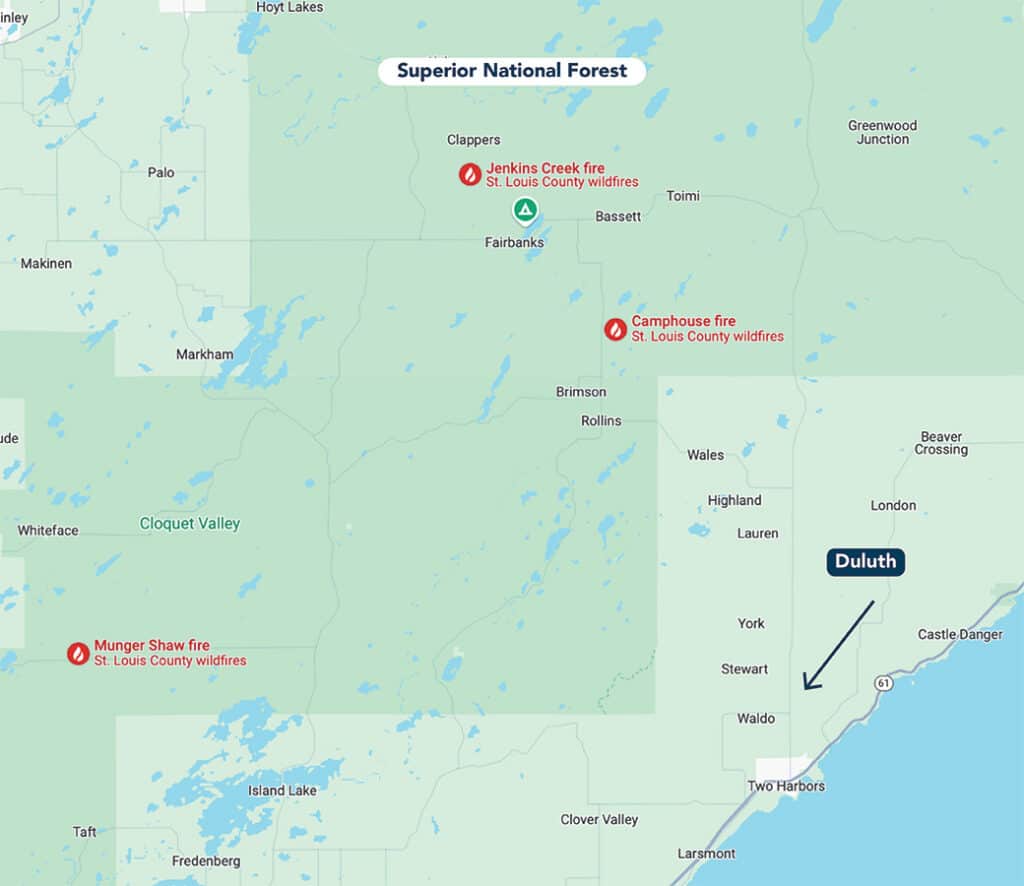
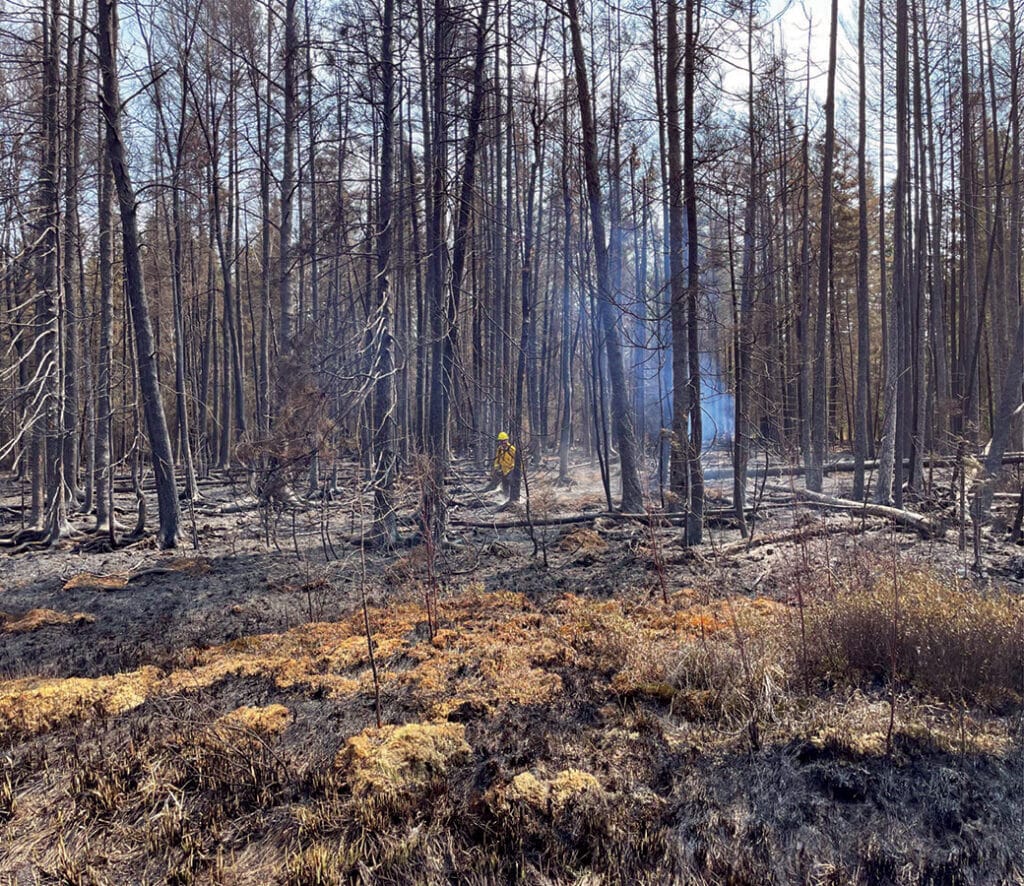

Jenkins Creek Fire
June 14 Update:
Size: 16,490 acres
Status: 98% Contained
From Minnesota Incident Command System – MNICS:
“Fire crews continue to make steady progress around the perimeter, gaining an additional 8% containment. Over the next two days, mostly sunny skies, light winds, and low humidity could lead to some additional fire growth. However, fire spread is expected to be slow due to current containment efforts. Today, crews will perform chipping, hazard tree removal, and log hauling operations along the northwest edge near Skibo to reduce roadside fuels and improve public safety. The most active heat remains in the northern interior, where crews are engaged in mop-up and patrols to locate and extinguish hot spots within the fire perimeter. Aerial resources remain active in fire suppression and can assist the nearby forest and surrounding area, if needed. A transfer of command to a new incident management team will occur on Tuesday, May 27.”
The Jenkins Creek Fire ignited Monday, May 12, north of Brimson. “Contract aircraft, local fire department volunteers, state employees, and federal employees have been working their hardest and best to suppress this fire under extremely challenging conditions,” the USFS–Superior National Forest posted on Facebook.
A local sheriff told Fox9 News that a discarded cigarette tossed from a vehicle most likely started the fire, as it originated along Highway 16. The cause is still under investigation.
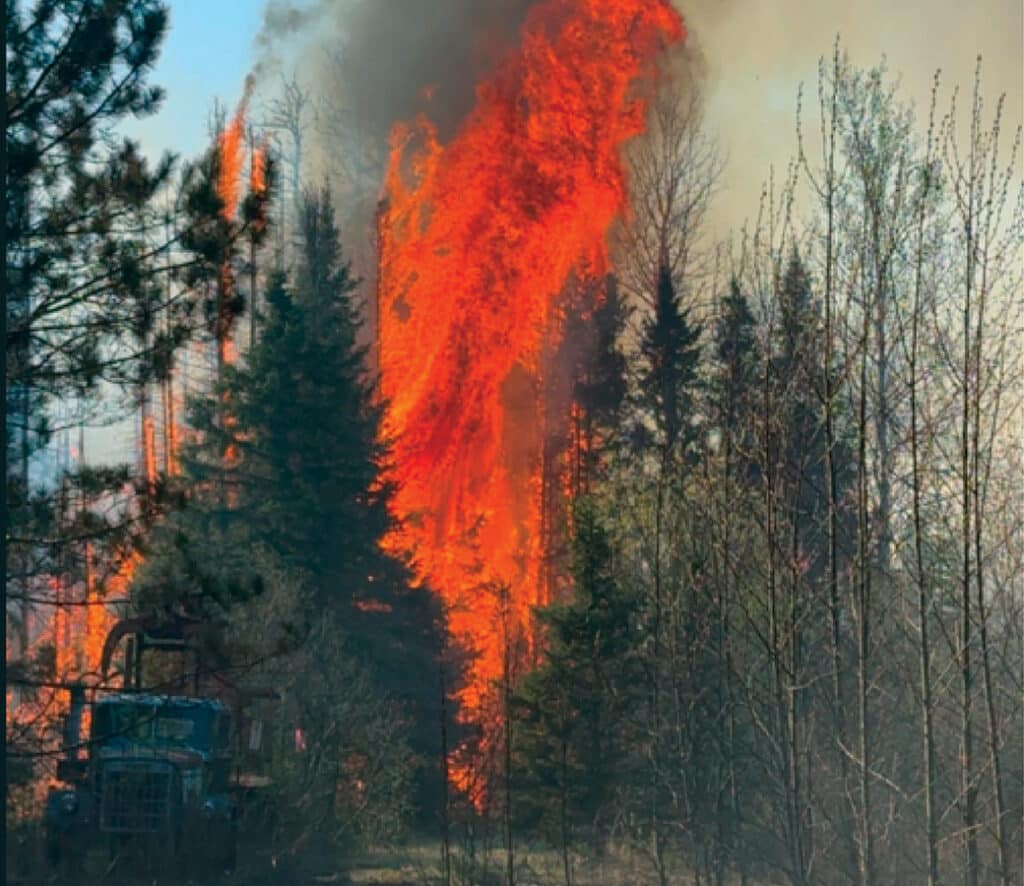
Munger Shaw Fire
June 2 Update:
Size: 1,259 Acres
Status: 95% Contained
From Minnesota Incident Command System – MNICS via Facebook:
“This will be the final update for the Munger Shaw Fire unless significant activity occurs. Over the weekend, firefighters made great progress with improved weather conditions toward containing the Munger Shaw Fire – now 95% contained. MNICS Team A will be transitioning the management of the fire back to the local Cloquet Area DNR Forestry at 6:00 a.m. tomorrow. After today, the fire organization will be approximately 3-5 people assigned to the fire. The Minnesota DNR will continue monitoring and patrolling the fire area. While the fire is largely contained, smoldering hotspots within the fire’s interior may continue to smolder and produce smoke until the fire area receives sufficient precipitation.”
The fire was first detected on May 12 and is burning primarily north of County Highway 15. Evacuations are ongoing as needed.
According to Fox9 News, the Munger Shaw blaze likely started when a bale of hay spontaneously combusted. The homeowner immediately alerted authorities, but the fire was already out of control by the time they arrived. The cause is still under investigation.
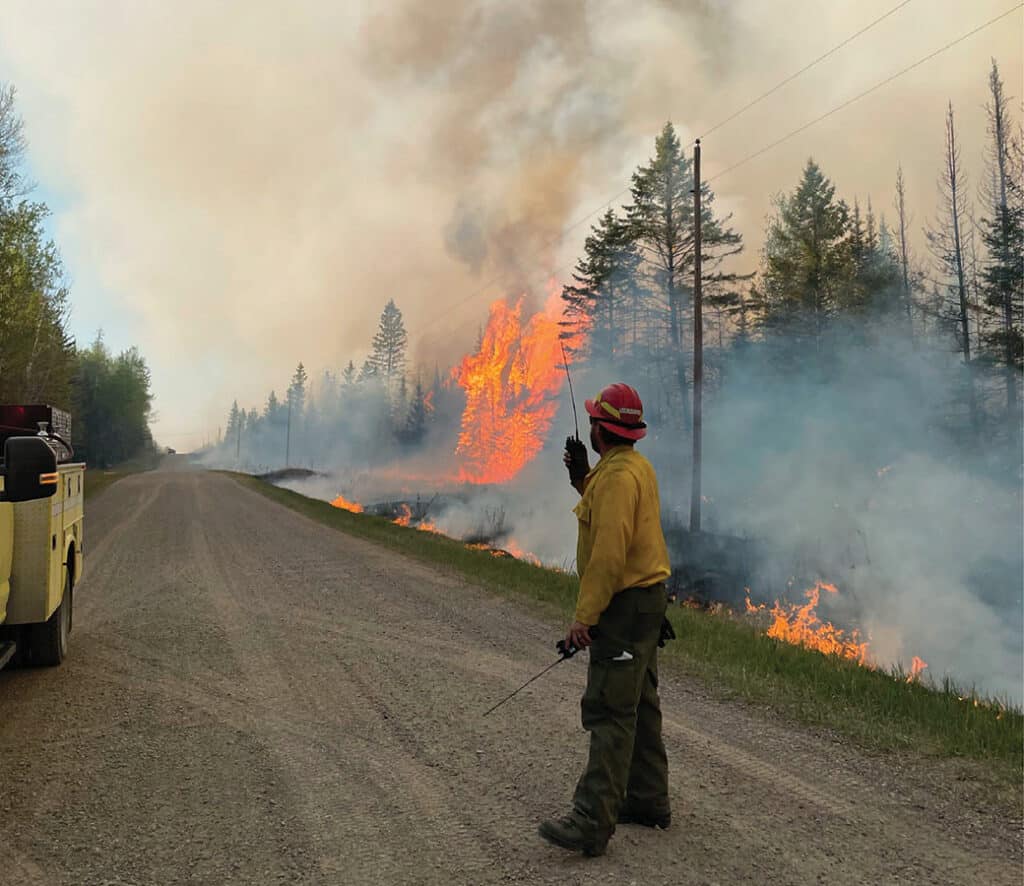
Forest Closure Order
The USFS-Superior National Forest has issued a Forest Closure effective May 13 on a portion of the Laurentian Divide Ranger District. Multiple recreational sites are closed to visitor use and include campsites, trails, roads, and lakes. The closure affects several recreational sites, including campsites, trails, roads, and lakes, which are now off-limits to visitors. A list of restricted areas can be found online at the USFS website.
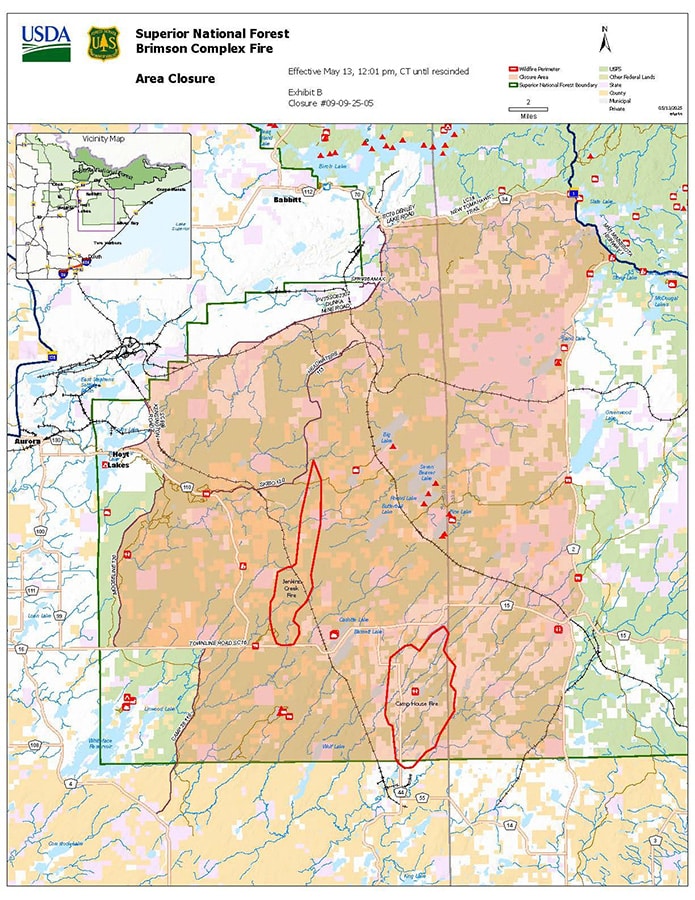
Counties under high alert
The National Weather Service has issued a Red Flag warning for 80 counties. It doesn’t necessarily mean a fire is present, but that conditions are ideal for one. This is due to high winds and low relative humidity. Additionally, the forest has been impacted by a large spruce budworm outbreak, making the region more susceptible to these types of challenges.
The Minnesota Department of Natural Resources publishes daily updates on wildfire risk and burning restrictions across the state. Users can find a breakdown of risk levels ranging from moderate to extreme. “When fire risk is this high, any spark can ignite a wildfire,” said Karen Harrison, a DNR wildfire prevention specialist. “People must exercise extreme caution until conditions improve.”
Evacuations
Authorities are issuing evacuation notifications to area residents as needed. Please use caution and avoid driving near the area. Real-time information and locations can be found online at InciWeb. Or, text “FIRE” to 66468 to receive text updates on current wildfire risk and open burning restrictions in Minnesota.
Wildfire prevention
Before you start a fire, be sure there aren’t burning restrictions in place. You can find more info at the Superior National Forest website or by calling one of the district ranger stations.
- Put out campfires completely before you go to bed or leave your site. Never leave a fire unattended. If restrictions are in place, plan on using a camp stove.
- Allow your fire to burn to ash, if possible. Heavily douse with water until all embers are out and the hissing sound stops.
- Avoid activities that include open flames or sparks.
- Ideally, burn within steel fire grates or rings.
- Avoid using power equipment that creates sparks.
- Do not burn trash. Burning plastic and foil pollutes the air and water.
- Transporting wood from out of state is prohibited due to the spread of tree diseases and pests.
More info:
- Camp House Fire – InciWeb
- Jenkins Creek Fire – InciWeb
- Munger Shaw Fire – InciWeb
- Forest Order 09-09-25-05: Brimson Complex Emergency Closure – USFS – Superior National Forest
- St. Louis County Fire Updates – Watch Duty
- Camp House Fire Update – Minnesota Incident Command System
- Update on the Jenkins Creek Fire – Minnesota Incident Command System
- Extreme fire danger continues – Minnesota Department of Natural Resources
- NOAA Satellite Imagery of St. Louis County Fires

